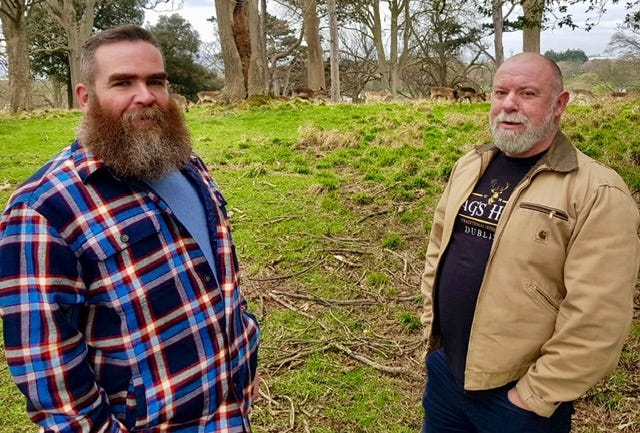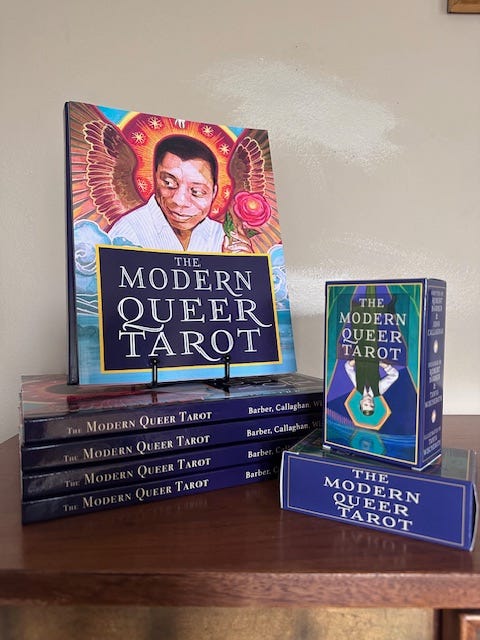Reimagining Spiritual Storytelling
The Modern Queer Tarot: A Conversation with Bobby Barber (Part II)
In the vast and intricate world of tarot, few projects have been as groundbreaking and meaningful as the Modern Queer Tarot. Created by Bobby Barber and his husband Jack Callahan, and beautifully illustrated by Tanya Wischerath, this deck is far more than a collection of divination cards—it's a vibrant tapestry of queer history, spiritual tradition, and artistic expression.
The Genesis of a Unique Tarot Deck
Bobby Barber's journey with tarot began early. "I've always wanted to create a tarot deck," he explains, "ever since I was probably around 12 or 13, when I first started exploring it myself." What started as a childhood fascination eventually became a professional pursuit, with Barber working as a tarot card reader from the age of 16 to 23.
The spark for the Modern Queer Tarot came unexpectedly. Barber and his husband Jack were casually discussing queer icons, joking about which historical figures might represent different mythological roles. "We were talking about queer icons as a pantheon," Barber recalls, "making jokes about who would be Zeus, who would be the fool." What began as playful banter soon transformed into a serious creative project.
Curating Queer Representation
Selecting the 78 figures for the deck was no simple task. With an initial list of around 200 potential candidates, Barber and Callahan were meticulous in their selection. "It wasn't about selecting the 78 most famous or influential," Barber emphasizes, "but rather finding the individuals who best represented each card."
This approach led them to include both well-known figures, such as Walt Whitman and Oscar Wilde, and lesser-known but equally significant individuals, like Stephen Donaldson and Alan L. Hart. The result is a deck that not only serves as a divination tool but also as a profound historical document of queer experiences.
Spiritual Roots and Mystical Connections
Barber's approach to tarot is deeply rooted in spiritual traditions. Drawing from his Jewish background and extensive studies of Kabbalah, he sees tarot as a complex language with connections to Judeo-Christian mysticism, Hinduism, and various pagan traditions.
The tarot is like a Frankenstein's monster," he explains, "with bits and pieces from different spiritual practices. This understanding is reflected in the deck's intricate symbolism, which honors ancient mystical traditions while presenting a thoroughly modern narrative.
A Pragmatic Approach to Readings
When it comes to conducting tarot readings, Barber takes a refreshingly direct approach. He describes himself as a "fortune teller" who treats the practice almost scientifically. "I know what every card means," he says. My job is to lay out the cards and provide their meanings in a cold, matter-of-fact manner.
Unlike many contemporary readers who might soften difficult interpretations, Barber believes in providing "cold, hard truths." He wants readings to be pragmatic and honest, allowing the individual to interpret the cards' significance about their own life.
The Artistic Journey
The deck's creation was a labor of love spanning nearly a decade. A pivotal moment came during the COVID-19 pandemic when Barber discovered artist Tanya Wischerath through a chance encounter with her murals in San Francisco's Castro district. What seemed like a coincidence became a perfect collaboration, with Wischerath spending two and a half years bringing the deck's vision to life.
Future Prospects
While another tarot deck seems unlikely, Barber is open to writing more about tarot. "I have a lot more to say about the tarot," he admits. More importantly, he hopes the Modern Queer Tarot will serve as a bridge—introducing tarot enthusiasts to queer history and vice versa.
Where to Find the Modern Queer Tarot
Instagram: @ModernQueerTarot
Website: modernqueertarot.com
Available at queer bookstores nationwide
Online retailers, including Amazon
The Modern Queer Tarot is more than a deck of cards. It's a celebration of queer identity, a historical archive, and a spiritual tool that invites readers to explore identity, resilience, and the complex tapestry of human experience.
As Bobby Barber and Jack Callahan have demonstrated, tarot can be a powerful medium for storytelling, remembrance, and connection.





